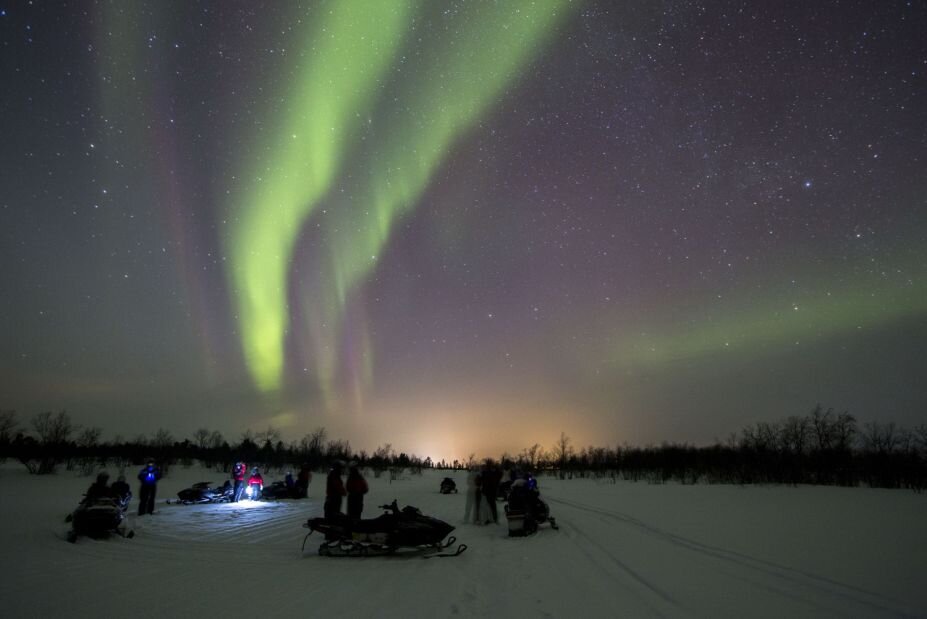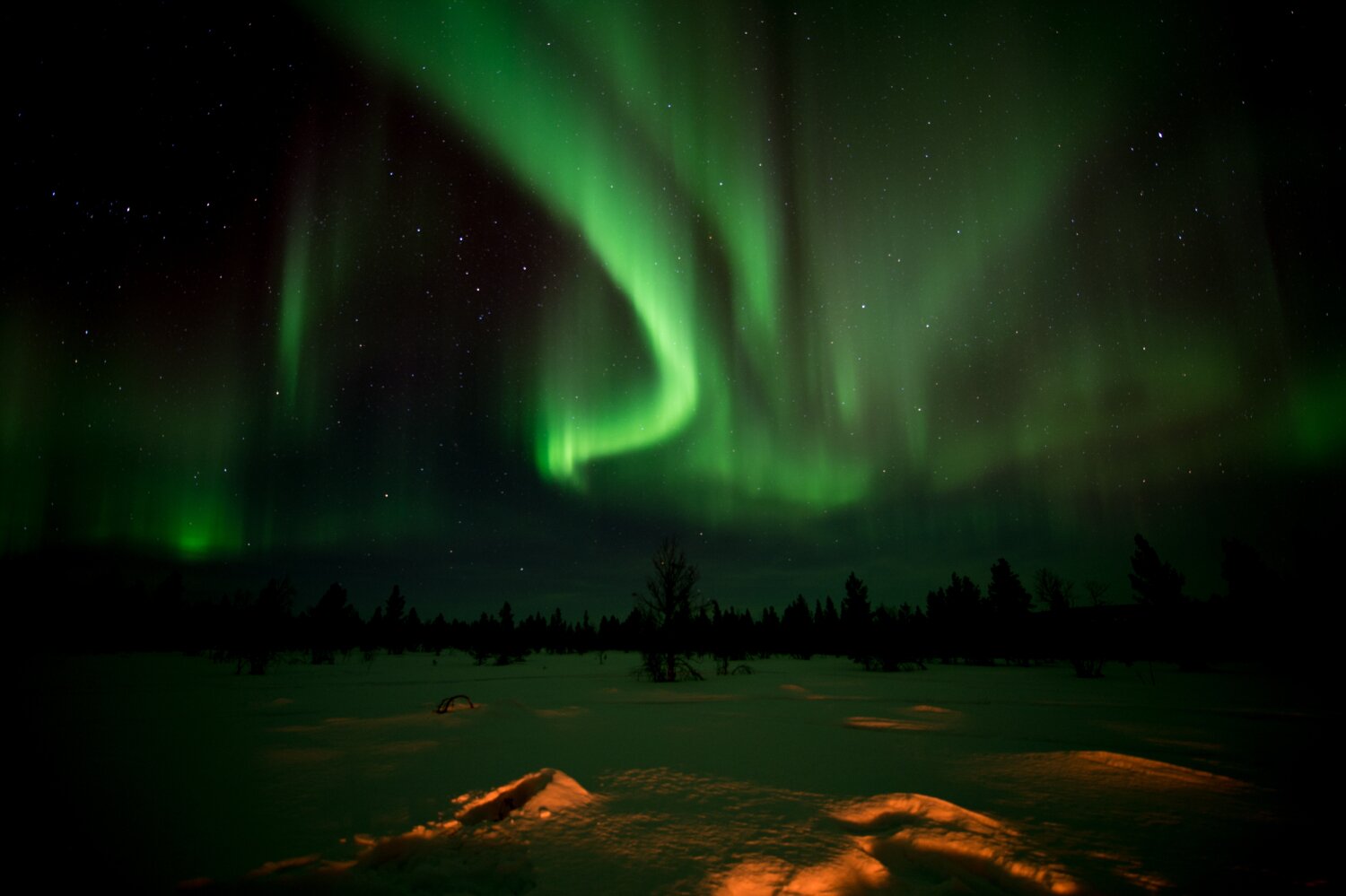The science behind the magic
A natural phenomenon that has left us mere mortals stunned for centuries, the Northern Lights are a wonder both to observe and understand. Here’s the science behind them: the colours swaying across the sky are caused by solar particles colliding with gases in the Earth’s atmosphere. The sun’s flares generate these particles. The result is a collage of red, green, yellow and purple shades dancing in the night. Pale green and pink are the most commonly seen colours. Different types of gas particles colliding cause the range of colours. (You won’t be tested on this later, don’t worry.)
The pale green colours, for example, are caused by oxygen molecules around 60 miles above the Earth’s surface. All-red auroras, however, are a result of high-altitude oxygen floating up to 200 miles high. Activity peaks every 11 years (often referred to as the solar maximum). However, they are visible annually above the Arctic Circle from November through to March.
_w=462_h=272_pjpg.jpg?v=202509161525)
An ideal location to see the Northern Lights
Dr Stuart Clark explains why seeing the Northern Lights from the magnificent Arctic landscape of Karesuando only amplifies their beauty. This Lapland village is home to just 300 people, straddling the border between Finland and Sweden. The frozen river that cuts the village serves as the border between the two countries, so you can hop between both, and the settlement is surrounded by a rolling landscape of frozen lakes and plains that provide excellent sites from which to view the Northern Lights.
_w=462_h=272_pjpg.jpg?v=202509161525)